Despite what the media would have you believe, hunting is one of the safest recreational sports you can take part in, with far fewer injuries each year than from more acceptable sports such as volleyball, soccer, horse riding, water sports, football, golf, bike riding and even table tennis (believe it or not)!
That doesn’t mean accidents or deaths don’t occur. It just means that, statistically speaking, you are less likely to be harmed or killed while taking part in hunting than you are from many other recreational sports and activities.
However, it is important to remember that hunting does involve a powerful firearm that has the capacity to harm if handled incorrectly.
That’s why it is so important to religiously adhere to basic safety principles.
Here in Australia, safety is an integral part of getting your firearms license.
But it’s not enough to just read it once and then never look at it again. Firearms safety needs to be etched on your memory; it needs to be the guiding principles by which you conduct yourself whenever you’re involved with firearms – whether hunting in the field, at the range or even transporting them from your home to one of these activities.
Here’s our 8 basic principles of firearms safety.
1. Treat every firearm as if it is loaded, even if it’s not
This is our cardinal rule, and the very first thing we teach anyone who comes out hunting with us. It doesn’t matter whether they’re brand new to hunting, or have been hunting for years, this is a non-negotiable rule.
If you remember just one, remember this – treat every firearm as if it is loaded, even if you are 100 percent sure that it is unloaded.
Why? Because it sets a precedent for safe behaviour, and by default, ensures you obey most of the other principles.
And by doing so, you will greatly reduce the chances of injuring, or worse, killing yourself or someone else.
2. Only point at what you intend to shoot
This principle pretty much goes hand in glove with #1. If you always treat your firearm as if it is loaded, you will never, ever point a firearm at another human, even in jest or when you think it is completely unloaded. You also won’t point it at an animal unless you intend to kill that animal.
A firearm is essentially designed to eject a bullet or projectile at enormous speed. In fact, the muzzle velocity (the speed at which the bullet exits the barrel) ranges from 2000km/h to 4500km/h. That’s 2 – 4 times faster than a jet airplane!
Always be aware of where you are pointing the muzzle and what the potential consequences could be if your firearm were to discharge.
For example, if it’s pointing at a wall inside your home, what is on the other side of that wall? The same goes for a ceiling if there are floors above you, or even the floor if there are rooms below you.
If you’re shooting out of a car, point the muzzle down into the floor of the vehicle, rather than up at the roof where it could ricochet and injure someone.
When walking with a firearm in the field, be aware of where your muzzle is pointing. The safest direction is pointing straight up at the sky. That way, if there are hunters in front or behind you, they are not in your line of fire if you trip or fall or accidentally squeeze the trigger. Which leads us to #3.
3. Keep your firearm unloaded until you are ready to shoot
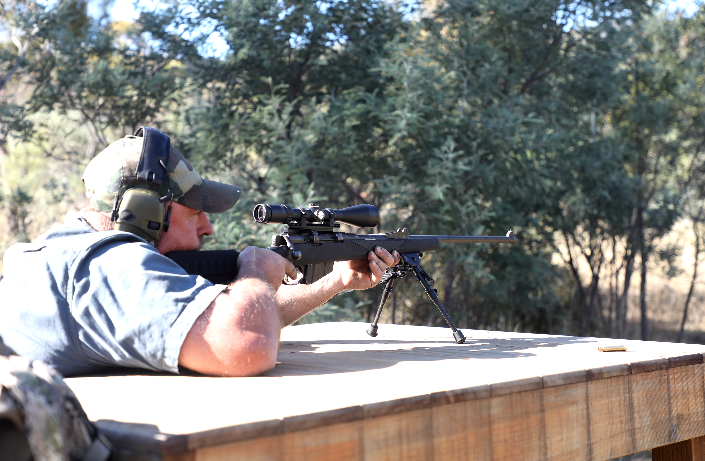 Never – and we mean NEVER – assume a firearm is unloaded. Every single time you handle your firearm, check (and then double-check) to make sure it is unloaded, even if you think it is definitely unloaded.
Never – and we mean NEVER – assume a firearm is unloaded. Every single time you handle your firearm, check (and then double-check) to make sure it is unloaded, even if you think it is definitely unloaded.
Open the action, visually check the chamber, receiver and magazine, making certain there’s no ammunition lodged inside.
We cannot stress this enough.
Make this habitual. Check when you take your firearm out of the safe, when you take it out of the vehicle, before you clean it, and definitely when you take it out in the field.
If someone else hands you a firearm, don’t take their word that it is unloaded, even if they are a more experienced hunter than you. Check for yourself. It’s better to offend someone than to accidentally shoot them!
Don’t fall into the bad habit of walking around in the bush with a bullet up the spout.
There will be hunters who vehemently disagree with this. They’ll even try to convince you that it saves time and allows you to get a quick shot off if an animal surprises you in the field.
Don’t believe it.
There is NO circumstance and NO animal that warrants the extra risk you place on yourself and others by walking around with a loaded firearm.
The overwhelming majority of firearms accidents occur due to trips, falls and mistaken identity.
While a safety mechanism can reduce the risk associated with a trip or fall, it does not completely remove it. Accidents can still happen, mechanical devices can still fail and that could result in a potentially fatal misfire.
You also greatly increase your risk of mistaken identity (ie. shooting the wrong target) when you don’t take the necessary time to properly identify and aim for your target.
The only time you should ever load a bullet into the chamber is WHEN you have clearly identified and lined up your target.
4. Know your target and what is beyond it
It is absolutely vital that you only shoot at targets that you have positively identified.
It’s not enough to take a shot on a flash of brown, or even a set of antlers if you cannot clearly and fully see the rest of the animal.
This is especially important if you are hunting public land, as that set of antlers could actually be strapped to another hunter’s back!
You also need to know what is in close proximity to your target.
Are there hard surfaces that a bullet could ricochet off? Are there other animals behind it?
We already know that bullets travel at enormous speeds. They can also travel huge distances! Depending on the caliber, bullets can travel anywhere from a couple of hundred metres to several kilometres. That’s why it’s also important to consider what is beyond your target.
If you miss, and the bullet keeps travelling, you could inadvertently end up shooting into a camping ground, a house, or even another person walking through the bush.
This is why we think rule #3 is so important. If you take your time, you’re far less likely to make a fatal mistake.
5. Check for obstructions and always use the correct ammunition
Some calibers of ammunition look quite similar, so when you are buying ammunition, or loading it into your firearm, ALWAYS double-check that you have the correct ammunition for that particular caliber of firearm. This is especially important if you reload your own ammunition.
Using the wrong ammunition could cause your rifle to misfire and cause an injury.
You should also check that your bore is clear of any debris or obstruction.
This could be dirt, snow or even ammo residue.
To check for an obstruction, point the muzzle in a safe direction, open the action, double-check that the firearm is unloaded and remove the bolt.
If you notice any debris or obstruction, remove it with a bore snake or portable cleaning rod.
Recheck the barrel and then close the action.
6. Don’t run, jump or climb with firearms
Remember what we said earlier about the majority of firearms’ accidents being caused by trips and falls?
Sorry to sound like Captain Obvious on Preschool Duty, but you’re going to drastically reduce your risks of an accident happening if you don’t run, jump or climb while carrying a firearm.
Running isn’t just dangerous, you’re likely to scare off any animals in the near vicinity anyway. Spot and stalk hunting is always better done at a slow, methodical pace, being careful to slowly step over, rather than jumping over logs, branches or creeks. If you’re climbing over a fence or fallen tree, either lay the firearm down on the ground or hand it to someone else while you climb.
7. Don’t mix alcohol and drugs with firearms
This should be a given. We know it’s dangerous to drive or operate heavy machinery while under the influence of alcohol or drugs, so it stands to reason that the same rules should apply to a firearm capable of taking a life!
And it’s not just illegal drugs either. There are many prescription drugs that can affect your judgement and cause you to take risks you would not normally take.
If you want to enjoy a few drinks with your hunting buddies, wait until AFTER you have completed your hunt, unloaded your firearms and safely packed them away.
8. Always store and transport your firearm safely
 In Australia, there are strict guidelines around the safe storage and transport of both firearms and ammunition.
In Australia, there are strict guidelines around the safe storage and transport of both firearms and ammunition.
Firearms must be stored in an approved safe, with ammunition stored in a separately locked compartment.
When travelling, firearms must always be unloaded and either have the bolt removed and stored in a separate, lockable container, or have a trigger lock attached to the firearm.
But even if you live in a country that doesn’t have such strict requirements for the storage and transport of firearms, we would still recommend locking firearms away, and travelling with then unloaded and/or secured.
At the very least, you keep them out of the hands of children or irresponsible adults.
There’s also an added benefit that it protects your valuable firearms from theft and falling into the hands of criminals.
What is I Am Hunter?
I Am Hunter has a lofty goal to change the way hunting is perceived in the community. Hunters can find a wide range of tools and resources to help them improve their skills and become positive role models and advocates for the hunting community.
I Am Hunter is a member-supported website. By paying a small monthly or annual fee, members help keep most of the content free, which in turn helps to spread a positive message about hunting with the wider community.
In return, members enjoy exclusive rewards and benefits including member-only content, discount codes, and giveaways.
Related content
Our other channels
Follow us on Facebook
Follow us on Instagram
YouTube
Subscribe to our YouTube channel.
Get our newsletter
Get our free monthly newsletter direct to your inbox
Listen on iTunes
Listen to our podcast on iTunes.
TV series
Watch I Am Hunter episodes on My Outdoor TV (MOTV)





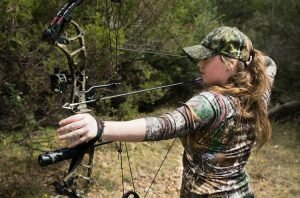
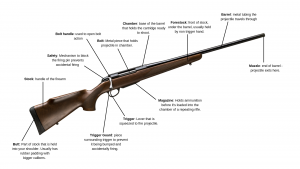
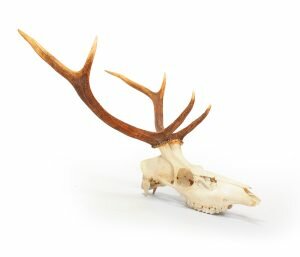
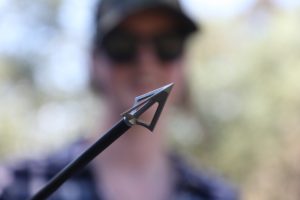

5 thoughts on “8 basic principles of firearm safety”